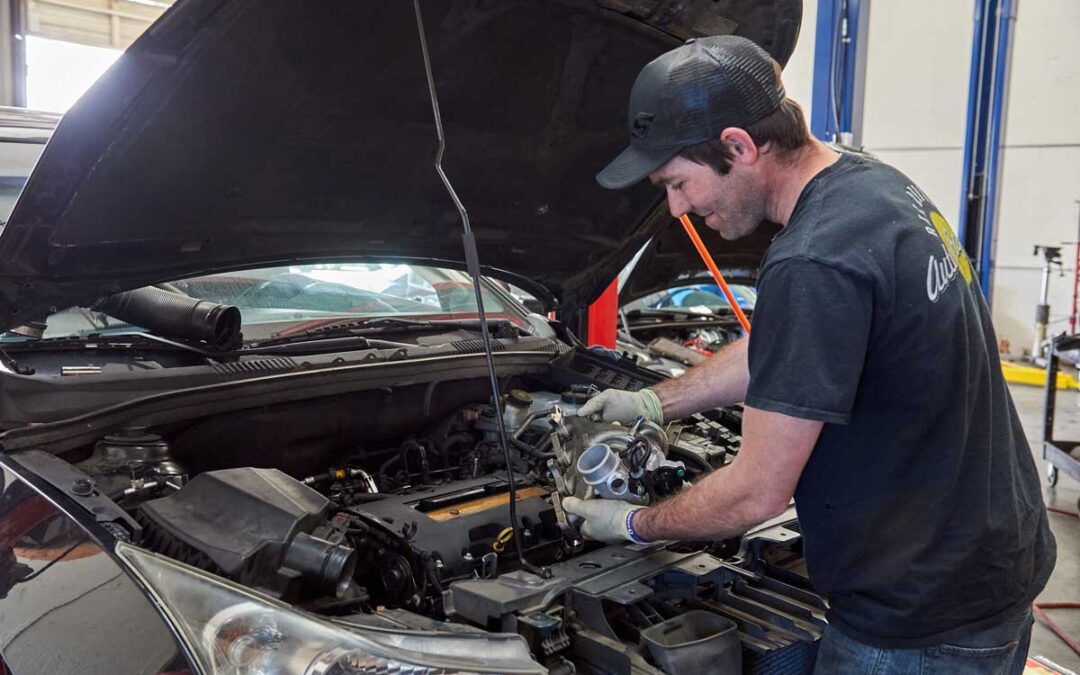The vast majority of vehicle owners aren’t entirely sure how to respond to a check engine light that suddenly comes on. What’s the best response? A shrug, mild concern, or something that really gets the heart racing and focuses the mind?
The Catch-all of Indicators
Because the check engine light is somewhat of a catch-all in terms of onboard diagnostics and dashboard indicators, a lot of vehicle owners just shrug their shoulders. The problem is too incomprehensible to warrant much attention, the thinking goes.
Since the mid 1980s – about thirty five years ago in people years and maybe 75 years ago in car years – onboard computers have monitored and adjusted vehicle performance. Everything from the speed that your engine operates to your ignition timing has been controlled by an onboard computer.
Your vehicle’s onboard computer relentlessly scans all of your vehicle’s system and quickly tells you when there’s a problem. Enter the check engine light.
Trouble Code
The check engine light might be the most mysterious symbol in the world to vehicle owners, but fortunately your vehicle’s onboard computer identifies the problem and stores it as a trouble code that the mechanics that All Around Auto Repair’s mechanics and technicians can quickly reference.
The trouble code that your vehicle’s onboard computer generates and stores in its system will tell the mechanics at All Around Auto Repair whether your check engine light indicates a problem with, say, your engine itself or simply indicates a shoddy sensor.
Usually, the only place that you can find the diagnostic equipment and electronic scan tools to make an accurate assessment of the issue is at an auto repair shop.
Code readers are commercially available and relatively easy to use for the adventurous at-home car repairman to employ, though if the issue is anything serious you should definitely take it in to the shop.
Fixing the Issue
Even if the issue is something as trivial as a malfunctioning sensor, most vehicle owners have no idea how to turn the sensor off without other electronic tools or the help of a mechanic. Gamely going under the hood and having at it can open up a pandora’s box of unintended issues that later need to be professionally repaired.
Red or Blinking – Immediate Action Required!
One general thing that you should be aware of with a check engine light is the color or whether the light is blinking – some vehicles will show a red instead of a yellow check engine light or a blinking indicator when the problem requires immediate attention from an experienced mechanic.
A red or blinking light could indicate a catastrophic problem with your engine, a malfunctioning onboard diagnostics, or an issue with an onboard oxygen sensor. Older vehicles with a solid yellow light might simply indicate that your gas cap is loose; newer vehicles usually have separate sensors for the gas cap.
Some issues might ambiguously fall between trivial and serious since they’re not that serious right now but could develop into big problems later.
The Importance of Regular Auto Maintenance
For instance, replacing an oxygen sensor will only cost a few hundred dollars, but failing to do so could mean plummeting fuel economy, wear and tear on your vehicle, and perhaps a new engine.
That could wind up costing you thousands of dollars instead of the few hundred dollars that you would have paid had you heeded the check engine light’s warning in time.
Regular auto maintenance is the trick to avoiding many of these check engine light issues since doing something like having your oil changed keeps your catalytic converter in tip-top shape. Contact us for more information.




